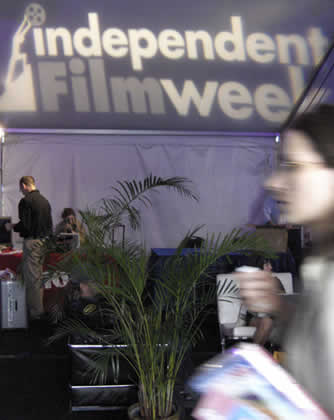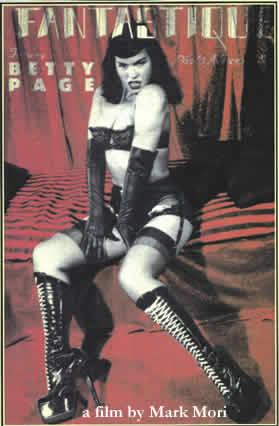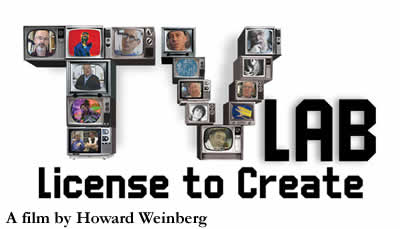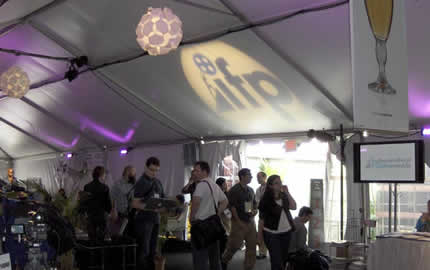 Between Sunday, September 14 and Friday, September 19th, the IFP Market marked its 30th anniversary with a new name and a six day celebration filled with tons of valuable industry information and new and exciting film projects.
Between Sunday, September 14 and Friday, September 19th, the IFP Market marked its 30th anniversary with a new name and a six day celebration filled with tons of valuable industry information and new and exciting film projects.
The newly christened INDEPENDENT FILM WEEK (IFW) is the United States’s biggest and most established film market for developing projects seeking patrons and producers. In addition to changing its name, the IFW also moved from the elegant Puck Building (which housed the CONFERENCE) and Angelika Film Center (where all film presentations and screenings were held), to the centrally located FASHION INSTITUTE OF TECHNOLOGY (FIT).
IFW’s two main pillars are the INDEPENDENT FLMMAKER CONFERENCE and PROJECT FORUM, which presents works in progress in the categories of SPOTLIGHT ON DOCUMENTARY, EMERGING NARRATIVES, and NO BORDERS INTERNATIONAL COPRODUCTION MARKET. .
This year, PROJECT FORUM selected 156 such works seeking funding, production partners or presenters and presented them to the national and international film industry. There were
– 43 scripts looking for a producer and financing
– 37 international projects seeking co-production partners and76 documentaries in various stages of production looking for financial supporters , festival invitations, pre-sales or production partners.
An advantage many documentaries have over any narrative feature is that some material is already available to give a first idea of what the film will be about, the subjects that will be included and the direction the film will take. So each of the 76 selected documentary filmmakers presented a trailer, talked about their project and engaged with the audience in a short q&a within a 30 minute time slot.
With the change of location, the trailer presentations and screenings were no longer held in a regular cinema, but in what are called MICRO CINEMAS, converted lecture rooms equipped with a large high-quality monitor. I personally much preferred this setting to the old one. Each of the three micro cinemas fit around 20 people and the screenings I attended were all full to capacity.. Compared to 20 people sparsely scattered throughout a dark 100 seat cinema, which creates an empty feeling, the micro cinema screenings had lots of energy and offered a personal atmosphere that invited the audience to engage in a dialog with the  filmmaker. And as these were all works in progress, showing them on a smaller screen was also much more appropriate for a film that was not yet fully edited, color corrected, or mixed
filmmaker. And as these were all works in progress, showing them on a smaller screen was also much more appropriate for a film that was not yet fully edited, color corrected, or mixed
.
The following are some of the documentary projects that came to my attention and I thought noteworthy.
BETTIE PAGE REVEALES ALL, is a work-in-progress by award-winning filmmaker Mark Mori about the life and times of pin-up legend Bettie Page. Although her career was short, she was extremely productive between 1952 and 1957 and her image continues to inspire and influence fashion, pop-art, film, and photography to this day. Most remarkable is that Mori is the first filmmaker to secure the full collaboration of Bettie Page – who no longer allows her image to be photographed, but agreed to allow Mori to interview her at length for his documentary.
At SPOTLIGHT ON DOCUMENTARY, Mori presented a 20 minute assembly of contemporary interviews and audio recordings, exceptional archival material and plenty of Bettie Page photographs, offering a glimpse at what the final film will look like. Besides being the portrait of an exceptionally progressive cultural icon, the documentary will also discuss the importance of her work in the context of the socio-political climate of the 50’s.
During IFW Mori was looking for national as well as international patrons , pre-sales and co-production partners. When asked about his experience at the market, Mori responded: “The market opened exciting, new opportunities for finishing funds and distribution for me. I was very gratified by the response to my film. One distributor told me it was her favorite project in the market and a financier/producer said I had the best marketing of any project he saw there.” In the days prior to his film presentation, Mori had been wearing a Bettie Page T-shirt featuring art work from his film, which clearly helped to raise awareness of his film.
Filmmaker David Van Taylor presented his latest feature length documentary ADVISE AND DISSENT. With unique access to Senators Specter and Leahy, chairmen and ranking members of the Senate’s Judiciary committee, Van Taylor captured the past three Supreme Court nomination processes of Chief Justice John G. Roberts, as well as Associate Justices Harriet E. Miers and Samuel A. Alito. Besides offering behind-the-scenes  insight into the workings of Washington, the film also draws attention to the current state of democracy, exemplified in the present and possible future tendencies of the Supreme Court.
insight into the workings of Washington, the film also draws attention to the current state of democracy, exemplified in the present and possible future tendencies of the Supreme Court.
ON BEING THERE WITH RICHARD LEACOCK- is a portrait of legendary veteran filmmaker Richard Leacock by fellow filmmaker Jane Weiner. Using archival and contemporary footage, the audience can appreciate Leacock during his earlier filmmaking career as well as his work today. The piece focuses on Leacok’s technical innovations as well as his unique approach to film making. The trailer alone offered plenty of gorgeous archival material and I am convinced that this will not only be a beautiful portrait but also an important contribution to the history of filmmaking.
Producer and director Howard Weinberg presented his latest project TV LAB: LICENSE TO CREATE at the IFW. His film is a homage to the days when television was willing to take more risks by supporting independent and experimental filmmaking, as exemplified by Thirteen’s own TV LAB program, spearheaded by producer David Loxton and engineer and editor John Godfrey. Weinberg’s trailer pointed out how many of today’s established filmmakers like Jon Alpert, photographer and artist William Wegman, Hollywood producers Michael Shamberg and Don Mischer, as well as producer-writer-director Diane English, were part of this innovative program that provided them with a national broadcast.
When asked about his experience at IFW, Weinberg answered that he found IFW exhilarating. He was encouraged by the fact that filmmakers and industry representatives, whom he did not know personally, were enthusiastic after seeing his 15-minute trailer at the IFW  screening or in the Video Library. . Networking at the many parties, luncheons, and in-between events expanded his contacts in the film and video community and may lead to new friends, as well as patrons..
screening or in the Video Library. . Networking at the many parties, luncheons, and in-between events expanded his contacts in the film and video community and may lead to new friends, as well as patrons..
Preparing for IFW, Weinberg says he focused on publicity and promotion by creating a press kit much earlier than he might have had he not been accepted into IFW. After 6 intense days of meetings and discussions with colleagues and associates, Weinberg will now focus on creating a comprehensive distribution strategy that defines target audiences, seeks partners who can reach those audiences, and supports ongoing fundraising efforts towards completion of “TV LAB: License to Create.”
These four films are just a fraction of the rich work that was on display. Because there were many film presentations going on at the same time, IFW set up a video library with copies of all the documentary projects – so in case one missed a public presentation, the library had the trailer readily available for viewing.
Apart from numerous project presentations and lots of networking possibilities, there was also the 6 day INDEPENDENT FILMMAKER CONFERENCE, which focused on a specific topic each day – ranging from FILMMAKING 101 to THE GLOBAL MARKETPLACE, to a day dedicated completely to non-fiction film making. The last day of the conference concentrated on FILM AND PHILANTHROPY.
All of the conference panels were informative and worth attending.. Well-placed 30 minute breaks between each session allowed filmmakers to approach the different panelists and ask individual questions.
Thursday’s panels focused exclusively on documentary film making and were sponsored by HBO. The final panel of the day, titled LIFE DURING WARTIME, featured prominent documentary filmmakers talking about their experiences filming in war zones and producing films on war related topics. Two of the panelists, Jon Alpert and Matthew O’Neill, collaborated on the production of two devastating documentaries BAGHDAD ER and ALIVE DAY MEMORIES and have just completed their war trilogy with SECTION 60: ARLINGTON NATIONAL CEMETERY for HBO. In their most recent collaboration, the two filmmakers spent months filming relatives and friends of fallen soldiers from the Iraqi war, who are buried in SECTION 60 of the Arlington National Cemetery. The film will have its television premiere on HBO on Monday, October 13th at 9 pm.
 Additional panelists were Alex Gibney, who won this year’s ACADEMY AWARD for his powerful documentary TAXI TO THE DARK SIDE as well as producer Alan Oxman whose documentary THE RECRUITER explores the life of army recruiter Sgt. Usie and his efforts to recruit and prepare high school students for service in the US Army.
Additional panelists were Alex Gibney, who won this year’s ACADEMY AWARD for his powerful documentary TAXI TO THE DARK SIDE as well as producer Alan Oxman whose documentary THE RECRUITER explores the life of army recruiter Sgt. Usie and his efforts to recruit and prepare high school students for service in the US Army.
The panel was rounded out by, Ali, one of the protagonists of Ivan O’Mahoney and Laura Winter’s documentary BAGHDAD HIGH, together with his father.
When moderator and HBO producer Jackie Glover asked about the dangers of filming in war-torn countries, Jon Alpert responded that his involvement and exposure to danger was limited, as he and his crew would only be in the war zone for a limited period of time – whereas protagonists and filmmakers like Ali, would be exposed to the dangers before during and after filming. Therefore he thought that the risks he and his team took were far less than the ones Ali and his family were exposed to when they agreed to be part of the BAGHDAD HIGH documentary.
In addition, Alpert reckoned that the editors of his films were exposed to much more stress than himself or his filming team because they had to view the cruelties, violence, anger, and sadness endless times during the editing process.
Overall, everyone in the audience agreed that the panel’s filmmakers deserve applause for their courage and commitment to telling important stories that give us a chance to learn about the lives, fears, and hopes of those dealing with war and its consequences on a daily basis.
Close to FIT, at the Chelsea Clearwater Cinema, the UK as well as Canada presented a showcase of trailers for recently completed films that will hit the festival circuit shortly. This was a very effective way to get a first glimps of new works produced in these countries. It is an interesting and effective tactic that more countries should consider adopting for next year’s IFW.
Congratulations to IFP for reinventing itself –in name, location, and nature. There were lots of interesting new works, many networking possibilities, and plenty of food for thought to take home and digest.
Look forward to seeing the completed film projects at a film festival in the nearby future.
For more information on IFW, IFP and all its services and activities, please visit: www.ifp.org

